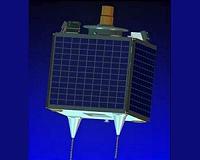 |
Canberra (XNA) Nov 12, 2010 An Australian company, Electro Optic Systems (EOS) on Wednesday welcomed the joint Australian-U.S. partnership to boost tracking of space debris. A leader in the field of space tracking, EOS has been operating laser space-debris tracking stations in Western Australia and the Australia Capital Territory. According to EOS chief executive, Ben Greene, most advanced economies were highly dependent on satellites for communication, navigation, entertainment, internet, resource management, global monitoring, weather forecasting and defense. And these satellites represent a collective investment of more than 600 billion U.S. dollars. He said space is becoming increasingly congested, due to the debris from over 50 years of space activities. Even a piece measuring just one centimeter across traveling at six kilometers per second could damage or destroy a satellite or manned space vehicle. "Space debris is a serious threat to this infrastructure and these applications, and EOS has been developing cost-effective debris solutions for more than a decade, based on its world- leading laser tracking capabilities," he said in a statement released on Wednesday. "EOS expects to be fully operational with the world's first automated laser tracking site for space debris by 2012, and we look forward to supporting Australian government initiatives to address this global problem in collaboration with the U.S." The annual Australia-U.S. Ministerial (AUSMIN) meeting for 2010 were held in Melbourne on Monday, where Australia and the U.S. signed an agreement for greater cooperation on space surveillance. The proposal is to place radars and sensors in Western Australia, as part of its plan to track dangerous space junk, satellites and other orbital objects passing over the Asia-Pacific region. This will enable Australia to support the U.S. Space Surveillance Network in providing more accurate warning of potential collisions in space. It will also allow tracking of foreign satellites. EOS in July this year announced that it had received Australian government grant funds of 4.04 million U.S. dollars to upgrade a space debris tracking site to automated operation by 2012. This upgrade is proceeding on schedule.
Share This Article With Planet Earth
Related Links Electro Optic Systems (EOS) Space Technology News - Applications and Research
 SSTL Satellite Steps Aside To Reduce Space Junk
SSTL Satellite Steps Aside To Reduce Space JunkGuildford, UK (SPX) Nov 12, 2010 Surrey Satellite Technology Ltd (SSTL) has successfully repositioned the UK-DMC-1 spacecraft, which is reaching the end of its operational life, using unspent propellant to reduce the orbital lifetime and the probability of generating space debris. Since the first satellite, Sputnik 1, was launched in 1957, thousands of satellites, launch vehicles and probes have been sent into space. In f ... read more |
|
| The content herein, unless otherwise known to be public domain, are Copyright 1995-2010 - SpaceDaily. AFP and UPI Wire Stories are copyright Agence France-Presse and United Press International. ESA Portal Reports are copyright European Space Agency. All NASA sourced material is public domain. Additional copyrights may apply in whole or part to other bona fide parties. Advertising does not imply endorsement,agreement or approval of any opinions, statements or information provided by SpaceDaily on any Web page published or hosted by SpaceDaily. Privacy Statement |